Make the day more fun with this super simple Play Dough Recipe. It requires only two ingredients, you can make it in minutes, and it’s a great sensory activity for the kids to do at home!
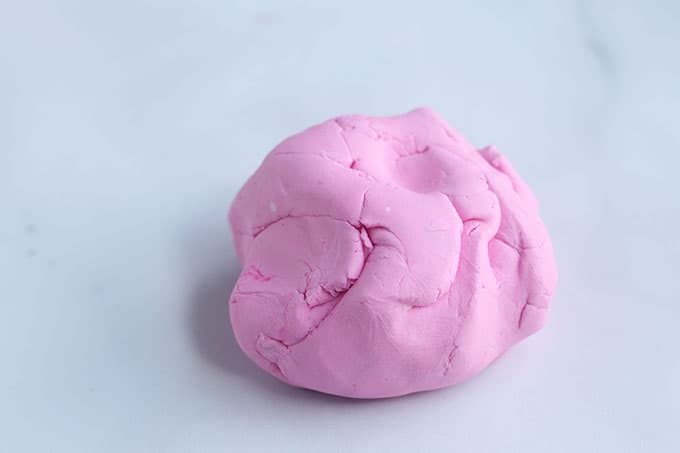
Play Dough Recipe
Keeping kids occupied and engaged in activities can often feel impossible and while I’m fairly mess averse when it comes to kids activities, I do love giving my kids the opportunity to get their hands messy at times.
And yes, we do buy play dough, but making it at home is a fun and new activity for most kids—that sort of doubles as a science experiment, too!
You can make this with added color or plain—whatever suits you. And it works to make it and use it right away, or to make it and store it for another time. It’s very versatile.
Table of Contents
Your toddler won’t eat? Help is here!
Sign up for our email updates to get tips and ideas sent to your inbox.
Uncooked Play Dough
This recipe uses cornstarch so there’s no need to cook it. This means you don’t have to do much prep work to have this activity ready for the kids. I like to have a big container of cornstarch on hand to use in this activity.
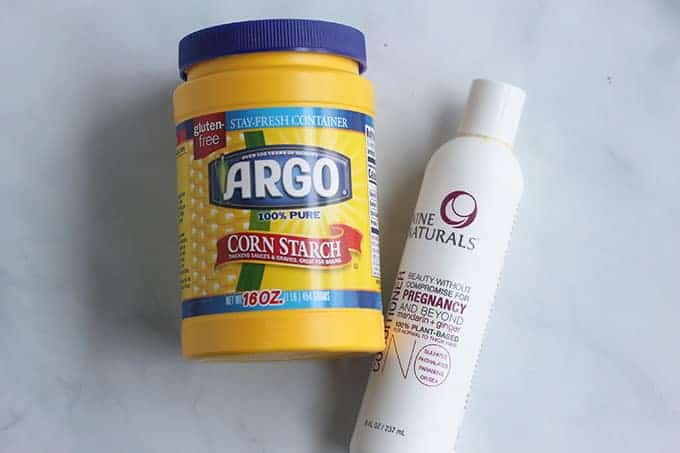
Ingredients You Need
To make this homemade play dough, you’ll need the following ingredients. (And yes, I realize that using conditioner is pretty random, but this is a great use for an old bottle of something you might have in the bathroom closet!)
- Cornstarch: This helps the play dough have its stretchy structure.
- Hair conditioner: We prefer to use unscented or a lightly scented natural conditioner in this since it’s very sensory.
- Optional: Food coloring
- Water: You’ll need to add a bit of water to the dough too, but otherwise, you really only need the two main ingredients.
Step-by-Step Instructions
Here’s a look at the simple process involved in making this recipe. Scroll down to the bottom for the full information.
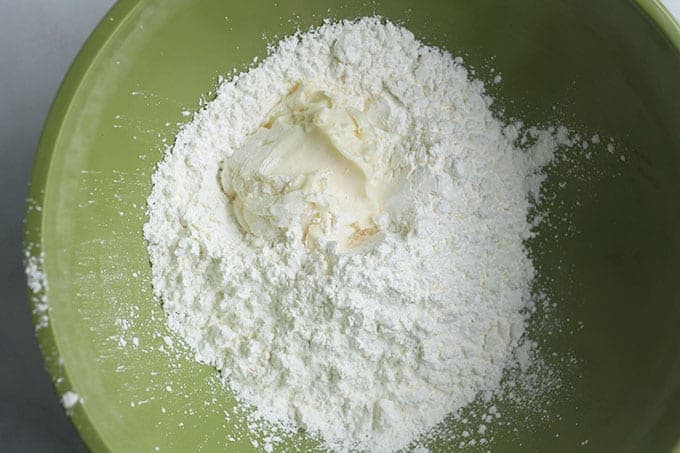
- Add the ingredients to a large bowl. (Big is better to prevent the cornstarch from getting all over the counter.)
- Start to knead with your hands, slowly adding water until it forms a dough. It will take a few minutes to make the dough come together.
- If the dough seems too dry or stiff, add a few more drops of water.
- Add food coloring, if desired, and play!
TIP: The consistency should be similar to play dough when it’s ready, with a slightly lighter overall feel.
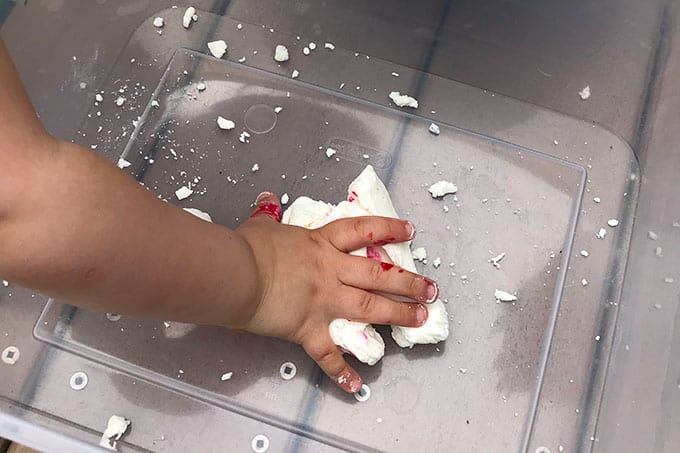
Frequently Asked Questions
Simply use your hands to knead cornstarch, hair conditioner, and water together to form a ball of play dough.
Sure! I recommend putting the ingredients into a big plastic bin and letting them make a mess in the bin as they help you make it. When we do it, I usually make the dough, then divide the batch in half and let each of my kids knead in their color of choice.
The combination of cornstarch and hair conditioner helps give this homemade play dough that classic stretchy texture.
This recipe doesn’t use it at all, so you won’t need to worry about it! (It’s not something I ever have on hand either.)
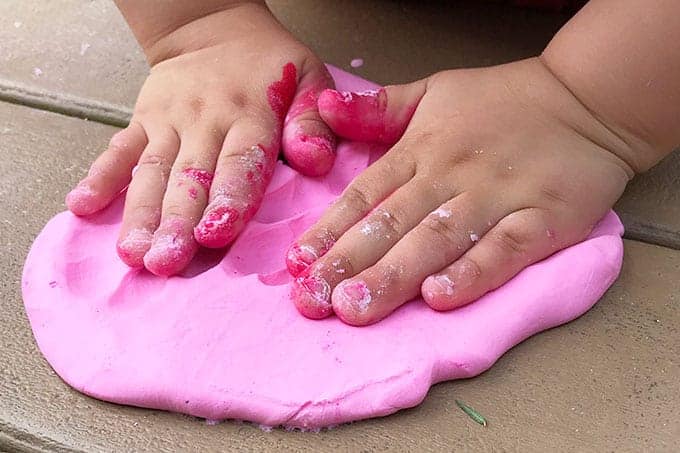
Can I do this project with a baby?
It is a little messy so try to wait until the kiddo is old enough not to just put everything into their mouths. I started doing this with my littlest when he was 13 months and he loves poking it! (I usually skip the food coloring with my youngest simply because his hands are harder to wash.)
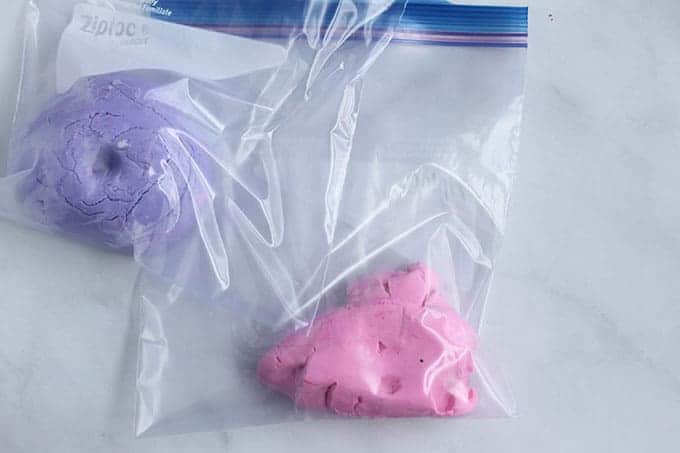
How to Store Homemade Play Dough
To save this to use again, place the play dough into a plastic storage bag, remove as much air as possible, and seal. If it feels a little stiff the next time you go to use it, knead in a few drops of water until it softens up.
Best Tips for Success
- Add the water slowly and work it in like you were kneading bread until you have a soft ball of dough.
- If the dough is still crumbly, continue adding a small amount of water at a time.
- Add food coloring to make it colorful, or leave it out. (It will get onto the kids’ hands, but a bath will take care of any that seems hard to get off!)
- Use conditioner with a neutral scent or choose something unscented.
- I’ve also heard that people have had success using body lotion instead of conditioner.
- To store, place the play dough into a plastic storage bag, remove as much air as possible, and seal.
- If it feels a little stiff next time you go to use it after storing it in a bag, knead in a few drops of water until it softens up.
- You may also like our Salt Dough Ornaments, which are one of our all-time favorite crafts to make together.
Related Recipes
I’d love to hear your feedback if you try this recipe, so please leave a comment and a review below.
2-Ingredient Playdough Recipe
Equipment
Instructions
- Add the cornstarch and the conditioner to a bowl.
- Mix together with your hands and gradually add ½ to 1 cup water as you mix and knead until it forms a ball of dough.
- Add 1-3 drops of food coloring to color the play dough if desired. (The food coloring will get on hands as it's mixed in, but it will wash off eventually!)
- Play!
Video
Notes
- Add the water slowly, and work it in like you are kneading bread, until you have a soft ball of dough.
- If the dough is still crumbly, continue adding a small amount of water at a time.
- Add food coloring to make it colorful or leave it out.
- Use conditioner with a neutral scent or choose something unscented.
- I’ve also heard that a lot of people have had success using lotion instead of conditioner.
- To store, place the play dough into a plastic storage bag, remove as much air as possible, and seal.
- If it feels a little stiff the next time you go to use it after storing it in a bag, knead in a few drops of water until it softens up.
This post was first published November 2020.
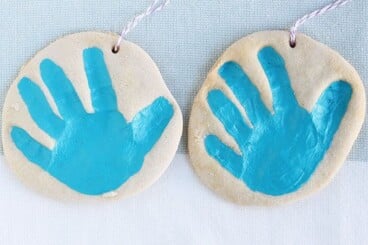
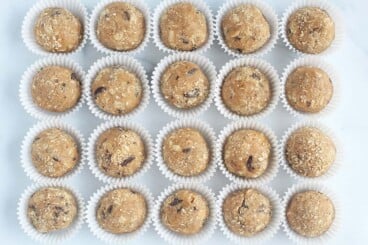
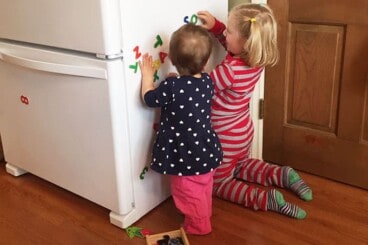

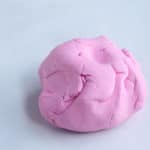


















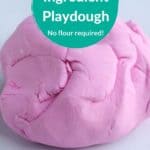
Help! I have the hardest time making homemade play dough. What do if I do if it’s sticky?
You can add a little more cornstarch.
Hi I tried making the playdough with my toddlers but it just turned into a cornflour like a gloop.
As in the UK, our cornflour may be a little different than your cornstarch in the US.
What can I use instead? As we can’t use certain ingredients in case my toddlers eat it.
Look forward to receiving a reply x
Yes, corn flour and corn starch would be two different things. I haven’t made this version with anything else I’m afraid!
Cornflour in the UK is the same as cornstarch in the US (white powder). Cornflour in the US is known as cornmeal in the UK.
Can you use this for something you want to dry and save?
For a few days you can. Store in a plastic storage bag and seal, removing as much air as possible.
Wanted to share this recipe with my virtual families but in the description narrative and directions on the “recipe card” it says “add water” This recipe calls for cornstarch and hair conditioner. No water??? Confusing to read. Will have to share another site’s recipe.
Water isn’t always listed as an ingredient in crafts or recipes since it’s assumed that everyone has it, and it’s simply added in Step 2 after you add the other ingredients, but I appreciate your feedback.